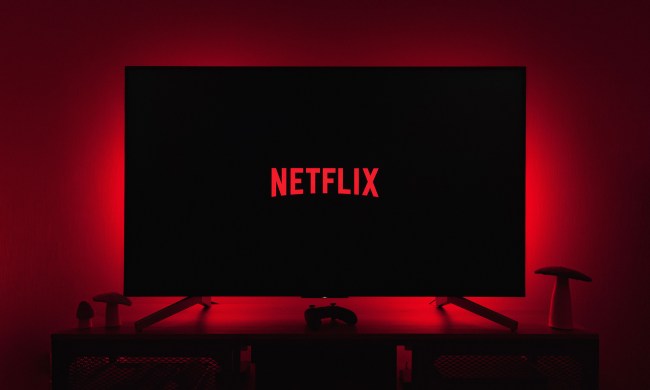The Surgeon General recently republished numbers from a 2021 Mind Share Partners report that found workplace trends like quiet quitting and the Great Resignation as indicators that Americans are tired of endless hours, unpaid leave, and chronic stress in the workplace. Remedying the issue will require employers to change the way they operate to help alleviate workplace stress and improve their staff’s mental health.
In an interview with The Manual, Bernie Wong, founding partner at Mind Share Partners, discusses the nonprofit firm’s stance and strategy for partnering with companies to create a thriving, positive workplace culture for everyone.

(The following conversation has been edited for clarity.)
TM: What does Mindshare define as a mental health condition?
BW: We used a shortened clinical screening form, not diagnosed mental health conditions since those are based on a diagnostic criteria, typically conducted by a clinician in healthcare settings. (Our) screener estimates the prevalence of experiencing a symptom on any level. Estimating the prevalence of diagnosed conditions is really important. A lot of people don’t seek treatment and thereby don’t get a diagnosis. Whether that’s a result of stigma, or that’s a result of access to afford getting a diagnosis, we lean more on the symptom prevalence of mental health.
We approach mental health as a spectrum of experiences. It can be symptoms like anxiety, and low mood. If it reaches a certain threshold, you could seek treatment and get diagnosed, but there are also non-clinical experiences like burnout. There’s a wide spectrum of experiences that we’re trying to capture. Even the conversation on stress or anxiety, sometimes can be motivating or beneficial, particularly in the workplace.
In our follow-up question, we asked folks, “What was the cumulative duration of these symptoms in the past year?” And over a third said from five to 12 months. In cumulative estimates, over a third (of people) had symptoms from half a year to the entire year actively experiencing and managing (mental health issues) day-to-day. Our work at Mindshare is urging companies to provide support and an environment that doesn’t deplete mental health.
TM: How does Mindshare help organizations make mental health a priority as well as get leaders to buy in?
BW: The question of money and time is almost always the question we speak to leadership. Research shows the long-term benefits of mentally-healthy workplaces. In our 2021 study, those who felt supported by their employer were half as likely to report mental health symptoms for longer durations. They were three times more comfortable talking to their manager in HR about mental health. That’s your ideal scenario. Talking about it is the initial step toward support. Outside of Mind Share, in 2020, Deloitte conducted a global analysis of a variety of studies around the ROI of mental health initiatives. They found five to one ROI from mental health trainings and a six-to-one ROI for broader awareness-building initiatives.
Ultimately, there might be short-term cost. Mental health hasn’t been something businesses actively invest in. Stepping back, this is about the cultures that organizations and leaders create. It’s psychological safety. It’s the very nature of work itself. It’s not just mental health 101, and we’re done. It’s, “How are people experiencing my workplace?” If people enjoy working at your company, they’re probably going to work better and harder. Why not make those investments to simply make people feel good about their work?
Whether that’s a variety of perks or pay or work-life balance, these are things that increasingly workers are really prioritizing. They’re saying, “We don’t necessarily want the free lunches or the ping pong tables. We want the true foundational investments in us.”
Investments in mental health also don’t necessarily need to be costly. Senior leaders can tell a genuine story about their own experience with mental health or encourage people to take care of their mental health can take five- to 10-minutes in an all-teams meeting. Managers checking in once in a while is also not an incredibly timely investment. These are the small, iterative ways you can build up to more formal monetary investments.
TM: How do you institute these practices, how do you continue them, and how do you build up to a part of culture?
BW: We have seen a lot of organizations take initial steps. The most common ones are manager training around workplace mental health, managers making this a pillar of company culture, and senior-most leaders telling those initial stories or weaving mental health into their communications.
Once you sustain that, there are ways to build into the infrastructure of your organization. Manager training, working styles, conversations, aligned on work norms… These small things create a meaningful and sustainable experience of work. We urge people to think, what is your day-by-day, minute-by-minute experience of work; not just the one awareness campaign in May.
TM: Have you seen a voluntary shift in culture toward embracing employee mental health post-pandemic?
BW: Absolutely. Even scrutinizing our own study between 2019 and 2021, we saw an increase in mental health symptoms, an increase in people saying work played a role in their mental health. There was a collective shift in awareness, in people self-identifying with mental health, and in people actively prioritizing it.
In 2021, half of U.S. workers reported leaving a previous role at least, in part, for mental health reasons. That number goes up to 68% for millennials, 81% for Gen Z. People are actively making employment decisions around their mental health.
TM: Is there anything that Mind Share wants to communicate to our readers on mental health in the workplace?
BW: One resource that I neglected to mention are employee resource groups. We’ve seen, even before the pandemic, a growth in employee groups focused on mental health. Employee research groups oftentimes can be started by anyone. It doesn’t matter what your role or seniority level is to start the conversation. Oftentimes we hear the challenge is figuring out how to meet the demand for membership.
It can be tricky to navigate privacy, and so we encourage (these groups) to loop in HR early, so they’re not taken by surprise. There are super easy ways to start the conversation while staying within your bounds — protecting privacy and navigating these conversations in a sensitive way.



